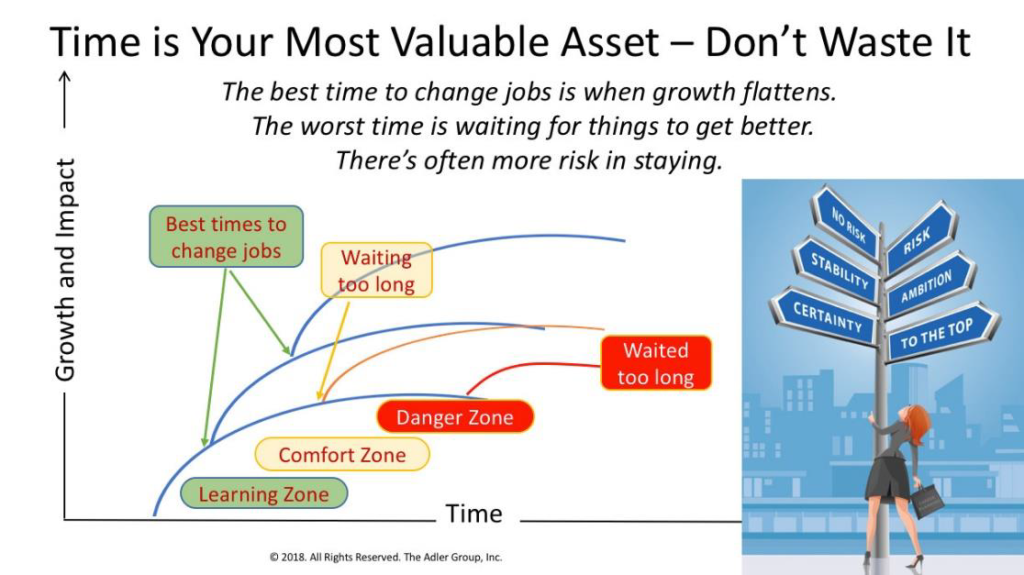THE JOB SEEKER’S GUIDE TO THE UNIVERSE AND RELATED MATTERS

By Lou Adler Influencer
Given this reaction to the importance of changing jobs I offer this piece of career advice hidden in the image: Don’t make long-term career decisions using short-term information.
Time is Your Most Valuable Asset. Don’t Waste It.
Soon after I was promoted into my first hiring manager role, I was asked to participate in my company’s MBA recruitment program. The first event involved recruiting financial analysts from the University of Michigan for our own team. My boss, Chuck, asked me to sit in on the first 30-minute interview with him and then I’d conduct another ten interviews that day on my own.
During the interview Chuck drew a graph like the one shown and suggested to the student candidate that if you go to a major well-known company you’ll love the first year on the job. That’s the high growth, high satisfaction and high learning zone represented by the steep part of the curve. Chuck then went on to say that the second year would most likely just be like the first. This is the comfort zone represented by the flattening of the curve. By the third year, however, you’d realize a promotion was unlikely in the near term and you‘d want to leave. This is the danger zone since you now only have one year of experience in the three years you were at the company.
Chuck then went on to say at our company (a well-known, but non-sexy multi-billion automotive supplier of brakes, axles and transmission systems) if you were good you’d
be put on a faster career trajectory. The reason related to recent acquisitions and that we were building a state-of-the-art financial control system and didn’t have enough people to handle all of the leadership roles becoming available. These are the situations you need to seek out in order to get 4-5 years of experience in 2-3 years. Chuck then said he was only 29 years old and had been with the company only two years before being promoted to the #2 financial spot at this $2 billion group. Then he pointed to me and said, “Lou has only been with us 10 months, just got his MBA last year and just got promoted.”
Not only was this a great recruiting technique, it was also true. We hired five of the six MBA students we made offers to and they all went on to have stellar careers.
About 15 years later – a few years after starting my search firm – I told a candidate not to make long-term career decisions using short-term information. He was about to take a job that paid more and offered a better title that was closer to home. However, the learning curve was almost flat since he’d be working in an old-line industry that wasn’t going anywhere. Then I drew the learning curve graph and suggested that whatever he did in the next 2-3 years would affect the next 5-10. He agreed to the logic and accepted my client’s offer. A year later he called to thank me. He had just been promoted to a VP-level role in a fast-growing segment of the electronics industry.
Based on many conversations like this one, I created this complementary graph – The Job Seeker’s Decision Grid. I think you’ll find it useful as you compare different career opportunities, especially how to avoid Job Hopping Syndrome. The key is to focus more on what you’ll be doing and becoming rather than the compensation package on the day you start. The downside of changing jobs for these short-term reasons quickly pushes you into the danger zone – spending valuable years getting no growth.
I’ve been using some version of this job satisfaction over time concept for a long time. It’s as valid today as it was 45 years ago when I first saw its power in action. Recognize that time is your most valuable career asset. Don’t waste it. There’s often more risk in staying than leaving. So if you want to get on a faster career trajectory, get out of your comfort zone and take some risk. And when it pays off, don’t thank me, thank Chuck.


